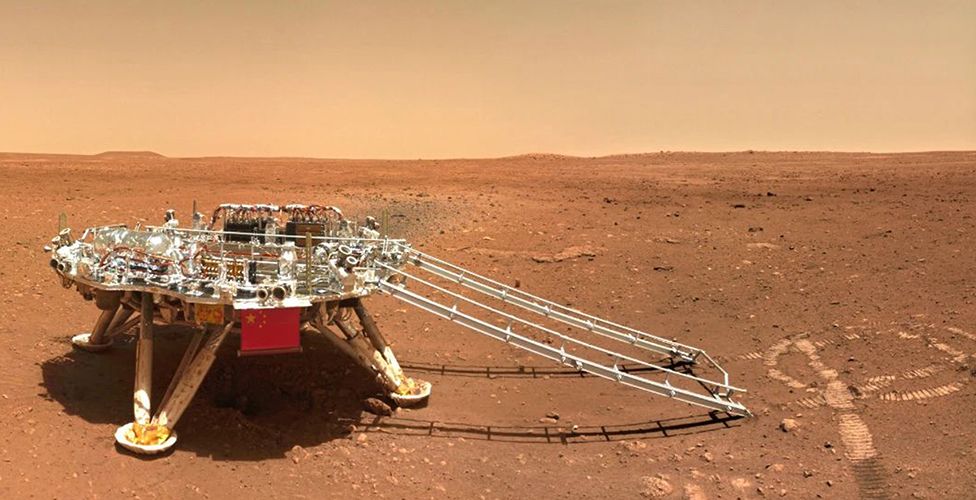China’s Zhurong Rover Takes Selfie On Martian Surface

China’s Mars rover, Zhurong, takes self-portrait as it explores Utopia Planitia region of Red Planet at same time as NASA’s Perseverance
China’s space agency has released new photos taken by the country’s Zhurong Mars rover, including a self-portrait.
State media said the photos showed the mission’s “complete success”.
Zhurong, named after the Chinese god of fire and the south, landed on the Utopia Planitia (“Plain of Paradise”) region of Mars on 15 May.
China’s first Mars mission also inserted a satellite into Mars orbit. It took NASA took several missions to complete the challenging steps of establishing both a satellite and a surface rover.

Panorama
The Tianwen-1 mission makes China only the second country to land a rover on the planet, after the US.
Zhurong’s first images, released several days after landing, showed a deployed ramp and the flat landscape of the surrounding plain.
The latest photos include a 360-degree panorama of the landing area, compiled from a number of post-landing images, as well as the reddish Martian surface.
The six-wheeled rover, which is 2.6 metres in length, also set down a wireless camera, backed away from it and took a selfie.
The image shows its extended solar panels and the rocket-powered landing vehicle it, with part of the ramp descending from the vehicle.
Last week the US’ University of Arizona released an image of Zhurong taken from orbit. The university’s HiRise camera is mounted on Nasa’s Mars Reconnaissance Orbiter, which reached Mars in 2006.

First mission
Zhurong is intended to last three months, or 90 Martian days, as it searches for signs of ancient life on Mars’ surface. The orbiter is also gathering scientific data.
“China will publish the related scientific data in a timely manner to let humankind share in the fruits of the country’s space exploration development,” said Zhang Kejian, head of China’s national space agency, the Xinhua news agency reported.
Tianwen-1 launched last July at the same time as NASA’s Mars 2020 mission – which included the Perseverance rover also currently exploring the Martian surface and the Ingenuity helicopter that made its first flight in April – and the United Arab Emirates’ Hope probe.
The missions took advantage of an alignment that brought Mars to the same side of the sun as Earth, making for a shorter journey.
China is also constructing its own space station, Tiangong, and launched the first module of the planned facility into orbit in April. The station could be operational by the end of next year.
The country is excluded from the International Space Station due to a 2011 US law that prohibits NASA from being in contact with China’s space programme, over national security concerns.
